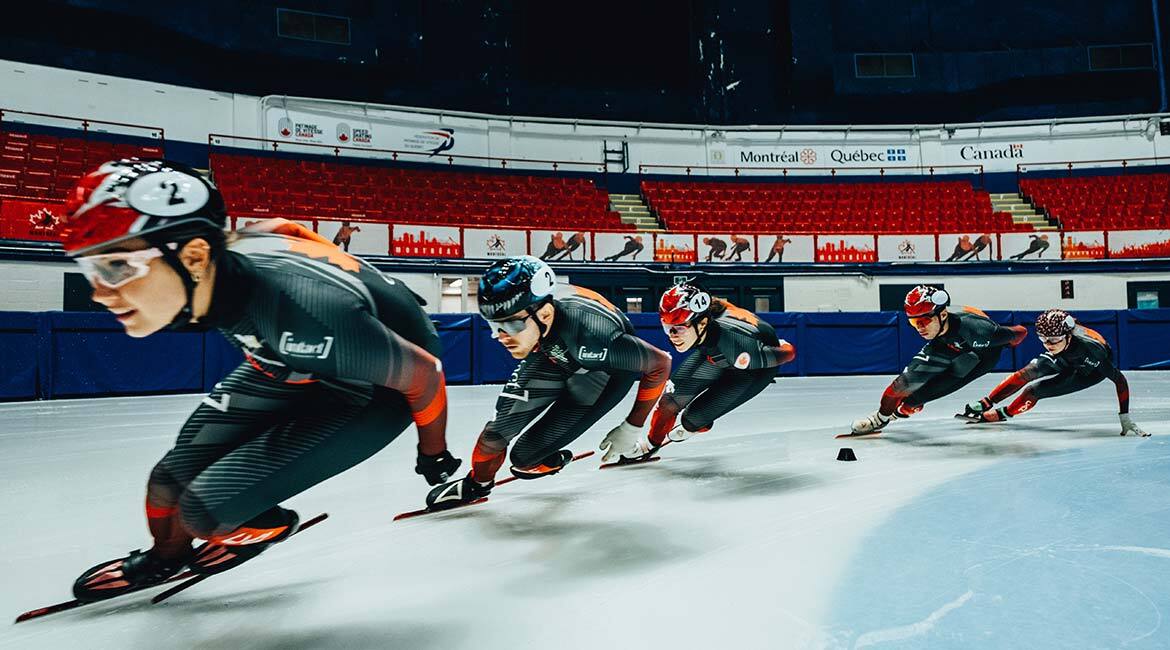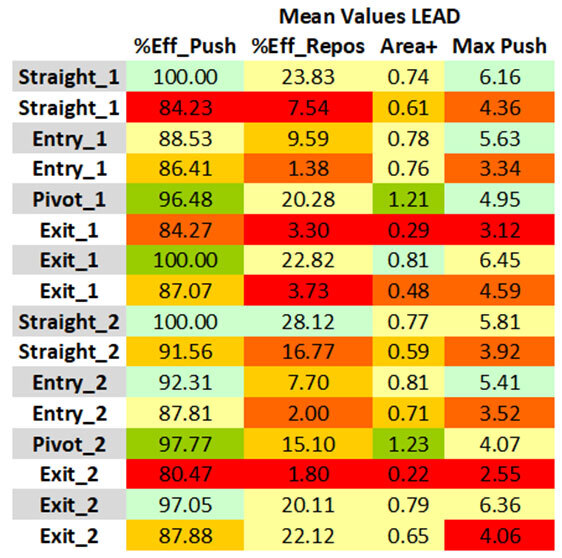Improving Performance while Minimizing Risks of Injury

@ Speed skating Canada: Arianne Bergeron. Copyright.
Sports in Need of Objective Data
High-level athletes need assessments and guidance to perfect their technique and to develop the strength and endurance required for Olympic-calibre performances. Generally, the coach’s job is to identify areas for improvement and suggest changes in physical preparation, technique or equipment based on their observations and experience. Unfortunately, few objective metrics are available for many sports due to limited resources. A research team at the ÉTS Imaging and Orthopaedics Research Laboratory (LIO) is working to fix this.
Field-Adapted Measurement Techniques
In the laboratory, 3D motion capture is often used to obtain kinematic data. However, this technique cannot be applied in the field as it requires wearing a suit fitted with sensors, hindering the athlete’s movements. As part of our research with the Canadian National Para-Swimming Team, our group developed a technique requiring only a single inertial sensor placed on the athlete’s lower back to measure the speed profile of their propulsion cycles. This type of sensor can measure linear accelerations and rotational speeds within the three planes of space.

Figure 1: A) Inertial sensor and velcro belt—linear encoder used to validate the method—positioned on a paralympic athlete. B) Same athlete starting in the 50 m freestyle.
This technique processes the signals from the inertial sensor using optimized filters to obtain the exact pool length, typically 25 m or 50 m. Once the signal is adequately interpreted, metrics are acquired automatically.
Training Load Assessment
Our team also studied the training of the goalkeepers of the Canadian women’s water polo team. These athletes are often sidelined during training sessions, making it difficult to assess training intensity. During a match, the goalkeepers are constantly backpedalling underwater (eggbeater) while waiting to make a save. When a ball reaches their net, they must propel themselves out of the water with powerful kicks to block it.
During these intense efforts, the rotation speed of the goalkeeper’s pelvis increases drastically. Using the signals captured, again with a single inertial sensor placed on the pelvis, makes it possible to define rest and high activity thresholds and characterize the intensity level—low, medium or high—of the training sessions.

Figure 2: Activity level distribution for a water polo goalkeeper during training and matches on the same day.
The proposed method automatically calculates the number of jumps, passes and kicks, and gives an overall intensity score for training sessions and matches. These external load metrics provide coaches with the information they need to adjust training and limit the risk of injury due to overtraining.
Performance Assessments
Our team also carried out extensive research on the Canadian short-track speed skating team. We characterized each skate stroke—beginning and end of a push, acceleration of a push and repositioning… Four main parameters were selected to evaluate performance (see Figure 3): push efficiency (%Eff_Push), repositioning efficiency (%Eff_Repos), speed gain of a push (Area+) and maximum acceleration of a push (Max Push).
After establishing average values for these parameters in a group of elite skaters, it was possible to show the strengths and weaknesses of each athlete for each stroke and help implement a personalized strategy—technique, equipment, exercise, physical preparation… But there is more. The effectiveness of the strategy could be measured concretely by taking the same measures a little later.

Figure 3: Performance parameters for each of the 16 strokes of a speed skater. Red boxes represent performances that need improvement.
Upcoming Speed Skating Projects
Soon, we will be starting a project estimating the centre of mass and load distribution in the feet using pressure insoles in the skates. These insoles will provide a better understanding of the effects of blade offset and curvature on load patterns and athlete performances.
An inertial combination will also be used to measure the influence of ankle dorsal flexion on athlete performance. Indeed, athletes are often asked to skate as low as possible to minimize air resistance and increase push time. Combinations will allow us to measure the effectiveness of this strategy objectively.
As the fall rate in this sport is quite high, we will also analyze the impact on athletes and the risk of concussions. First, we will quantify head acceleration using video analysis. This analysis will then be used to check whether the helmets really offer adequate protection.
The Technology Transfer Challenge
To date, our methods have proved to be accurate and consistent with the observations of coaches and athletes. However, they represent a major change in how things are done, and their acceptance in the sporting world will take time. The metrics obtained can provide tangible measurements for more subtle issues, unobservable to the naked eye. Moreover, they make it possible to assess the relevance and effectiveness of the proposed strategies objectively. Improving our athletes’ performances involves the acquisition and analysis of objective metrics.



